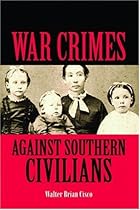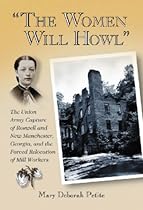"Wake up, you little bastard rebel..........."
EAST TENNESSEE UNIONISTS
EAST TENNESSEE
UNIONISTS, RACIAL MORES & HOSTILITY
On December 8, 1860 Tennessee Governor Isham Harris called for the State legislature to hold a special session to take up the issue of secession. By February 9th, 1861, Tennessee voters had rejected a call for a secessionist convention. Tennessee, unlike her neighbors in the deep South, did not hold slavery as an overriding issue and preferred to stay in the Union.
On April 15, President Lincoln called on Tennessee to provide troops for the Union, however, Governor Harris refused and called for a second convention and on May 6th, Tennessee voted to go to a popular referendum to consider secession. On June 8th,
Tennessee decided to break from the Union, as the issue of States Rights overrode the Unionist appeals of East Tennessee.
On June 17, 1861, voting was held “for and against” representation in the Confederate States Congress. The voting took place in Greeneville…Sullivan County voting 1,586 for separation with the opposing vote at 627; the vote for representation being 1,567 for and 637 against. In contrast, Carter County was 86 for separation and 1,343 against; 86 for representation and 1,343 against.
By August 1st Tennessee voted to adopt the Constitution of the Confederate States of America, thereby laying the basis for secession; Tennessee becoming a hotbed of contention by both North and South. Sullivan County sent her sons to the Southern Army, Carter and Johnson County to the North. Southern primary units receiving Sullivan County men were the 19th, 59th, 60th, 61st and 63rd Infantry Regiments, while others made their way westward to enlist with other regiments. Carter and Johnson County Unionists made their way primarily into the ranks of the 13th Regiment Tennessee Volunteer Cavalry and 4th Tennessee Infantry Regiment under Colonel Daniel Stover, a son-in-law of Andrew Johnson.
Those who remained suffered dearly in all of upper East Tennessee; with no side escaping criminal predations from bands of lawless raiders of lives and property, mainly known as “bushwhackers”. Such was the life and fate of many good citizens during this holocaust of “brother against brother.”
The events of nearly 150 years ago still raise arguments to the present day, and it is usually easy to get heated discussions going on blogs and web sites, pro and con. Everyone has his or her own opinion based primarily on their perception of the causes of that heinous period in history. Re-enactments of battles are popular events, and the tales of gallantry of various Regiments and heroic acts in battles are acted out with the utmost respect to detail. Organizations abound for the descendants of those who fought this great war: The Order of The Confederate Rose, United Daughters of the Confederacy, Grand Army of the Republic and others. As a member of the Sons of Confederate Veterans, I feel no need to elaborate on my beliefs (stated in the first paragraph)…..for that is not the purpose of this article. One must do his own research, and there is no dearth of information. Library shelves are full of books on the subject, and the Internet is buzzing.
In War Crimes Against Southern Civilians by Walter Brian Cisco: “Robbery was common, as was sexual abuse of black women by Yankee soldiers. A U.S. cavalry regiment recruited from among East Tennessee Unionists and described by one girl as ‘the meanest men I ever saw’ rode into Gallatin in May 1864 and began a reign of terror. They torched two newly established schools for black children, murdered one freedman, and swore they would—as soon as they could—kill every black in town”. [This was possibly done, as previously mentioned, by the vaunted Thirteenth Tennessee—men from Carter and Johnson Counties—who committed these war crimes, or possibly the 8th Tennessee Cavalry Regiment or 9th Tennessee Cavalry Regiment, also comprised of East Tennessee Unionists and in Gallatin in May of 1864.]
A Company of the 13th, Co G, is also“credited” with the capture and death of General John Hunt Morgan in Greeneville, TN. There are reports of witnesses who claim General Morgan was murdered after he surrendered, but of course, denied by Scott & Angel. In Between the States: Bristol Tennessee/Virginia During the Civil War by V.N. “Bud” Phillips stories are told of Bristol citizens, including women and children being abused, beaten and shot by Yankee invaders. One story of particular interest to this writer is the story of a slave in the home of a Mrs. Seabright. The slave, named Safrilla, was watching the Seabright’s one year old baby sleeping on an open blanket near an open fireplace. It was in December of 1864 and General Burbridge was in Bristol to put “holy fear” into the local citizens as well as “visit” their homes. A Yankee soldier entered the home, and seeing the folded blanket the child was laying on, jerked it from beneath the child while yelling, “Wake up, you little bastard rebel, and see what a real Yankee looks like.” As the child screamed, Safrilla arose and without hesitation seized a fire poker and broke the Yankee’s skull. Safrilla wrapped the soldiers bleeding head in a throw rug, pulled him into the kitchen, dropping his body through a trap door to the cellar. She pushed a huge cupboard over the trap door. She then bodily threw Mrs. Seabright into her bed and told her to pretend to be seriously ill: “Now ye play sick; lay still and look bad.” She then raked coals and ashes over the blood stains in the floor and hid the soldier’s rifle under a bed. When the soldiers missed the dispatched child molester, they went looking for him. When they got to the Seabright home, Safrilla answered: “Oh sho he come here, but I told him they got the pox and he hightailed it and left.” Looking at Mrs. Seabright she said, “they got the pox, they got the pox.” The Yankees left on the run.
When General Burbridge was told a soldier was missing, he threatened to burn Bristol to the ground…..but one of his officers convinced him he saw the soldier running toward Blountville, a possible deserter. Bud Phillips believes that the officer was perhaps from Bristol or had relatives in the town, thus sparing the town more misery from the invading army.
There are many references of the black population of the South protecting their Southern homes, for close bonds had been formed over many generations. Some served in the Southern Army, fighting beside their masters in a common defense of their homeland. The number can be debated, but is an historical fact.
References and suggested reading:
Alice Williamson Diary—David N. Rubenstein Rare Book and Manuscript Library; Duke University
The Day Dixie Died by Thomas and Debra Goodrich
History of the Thirteenth Regiment Tennessee Volunteer Cavalry by Scott & Angel
Between the States Bristol Tennessee/Virginia During the Civil War by V.N. “Bud”Phillips
Adventures of Daniel Ellis The Union Guide by Himself
http://www.southernheritage411.com/
William C. “Bill” Hicks/26 July, 2010
www.ltrobertjtipton2083.com


+Confederate+Decoration+Day+2011++Highland,+Elizabethton,+TN.JPG)










<< Home